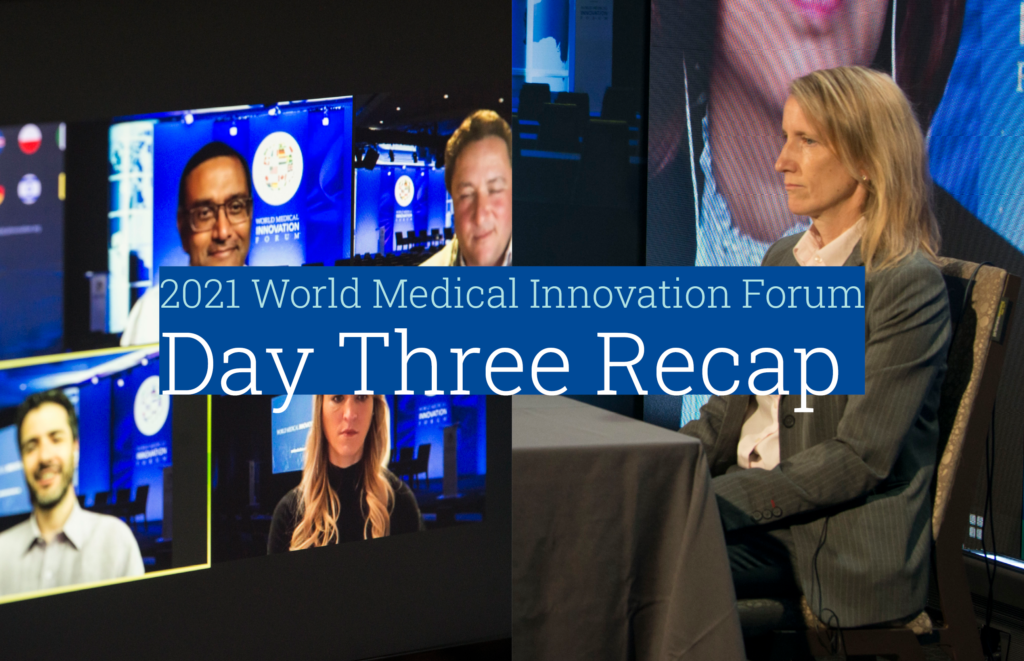WMIF MAIN SITE
2024 Event Site
The need for a platform-driven approach to GCT development was the central focus of the first panel of the day.
“The innovation wave is hitting a scalability problem,” said Robert Nelsen, managing director and co-founder of ARCH Venture Partners. “If you look at gene and cell therapy, it’s physical scalability—how do we actually make these things—but it’s also a regulatory scalability. You can’t have a system that has 1,000 products or 3,000 products where every single one is a one-off manufacturing process. It won’t happen.”
“There is a major mismatch between what is possible right now and what things should be,” said Kush Parmar, MD, PhD, Managing Partner at 5AM Ventures. “I think it calls for a new business models, and definitely some change. It can’t be just companies—I think there are regulatory frameworks and a number of other stakeholders that need to be part of this.”
Investing modes driving GCT technology and timing was the highlight of a second investor panel. “We’ve seen the first generation of gene and cell therapies. I think we know where the opportunities are in terms of technologies that need to be improved upon, said Oleg Nodelman, founder and managing partner of EcoR1 Capital. “That’s where we’re focusing our time and effort.”
“I think the space is getting fairly crowded with a lot of programs, which is great in that you get some data that shows what could possibly work, said Peter Kolchinsky, PhD, founder and managing partner of RA Capital Management. “What we’re looking for are technologies that make us feel that given the space they are targeting and the disease they are targeting they are future proofed against disruption by someone doing it even better or more cleverly.”
Scientific panels on Day 3 focused on GCT opportunities in regenerative medicine and stem cell therapies and neurodegeneration. “Regenerative medicine—perhaps more than anything—has captured the imagination of scientists and doctors, because it provides the opportunity for a new modality that is truly transformative,” said Ole Isacson, MD, PhD, director of the Neurodegeneration Research Institute at McLean.
“Neurodegeneration implies a slope of clinical and phenotypical decline,” said Bob Carter, MD, PhD, chairman of MGH neurosurgery. “Is our goal here mitigation, or do we think there is an opportunity for reversal of some of these neurological phenotypes and symptoms?” Panelist responses to this question varied by therapeutic modality. “The prime goal of gene therapy in neurodegeneration is to prevent symptoms from developing in the first place,” said Geoff MacKay, CEO of AVROBIO. “We do hold out hope that if there is not gross neurodegeneration there may be certain settings where there’s a potential for reversal.”
“To me, the great promise of autologous cell therapy, is if we take the patients’ own cells, transform them into immature dopaminergic neurons, they can be placed focally in the neighborhood of the striatal neurons, and they have the inherit capability and they are basically programmed to find the find the striatal neurons on their own and form the missing synapses,” said Nikola Kojic, MD, PhD, CEO and co-founder of Oryon Cell Therapies.
The three-day forum concluded with the introduction of the Disruptive Dozen—12 new technologies identified by senior leaders from Mass General Brigham as having the chance to significantly improve healthcare in the next two years.
Concluding remarks touched on the importance of continued collaboration, access, equity and keeping patients at the center of the GCT development process.
“The Forum demonstrates demonstrated the urgency in advancing gene and cell therapy to the front lines of medicine, to benefit patients everywhere,” said Nino Chiocca, MD, PhD, BWH neurosurgery chair and one of the four Forum co-chairs. He recognized the accomplished group of panelists and presenters who participated, and the more than 3000 registrants around the globe.
“We’ve heard about this vital role of collaboration during this meeting—collaboration among academics and academics, industry and academia, investors, and regulators,” said co-chair Ravi Thadhani, MD, chief academic officer for Mass General Brigham. He emphasized that in addition to working on new therapies for rare disease, ultra-rare diseases and chronic diseases, Mass General Brigham is committed to ensuring access and equity in treatment. “It’s our mission,” he said.
“There’s a continued need for a pipeline of invention, a pipeline of investment and the continued development of new tools and treatments, added co-chair Luk Vandenberge, PhD, Grousbeck Family Chair for Gene Therapy at Mass Eye and Ear. “We all sense great optimism regarding the power of gene and cell therapies. We have heard the day-to-day impact they can have on patients.”